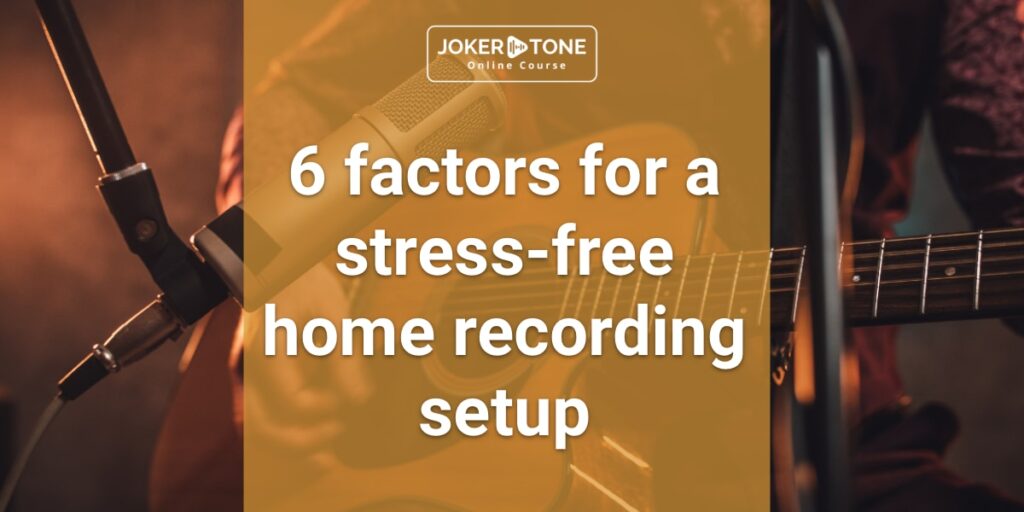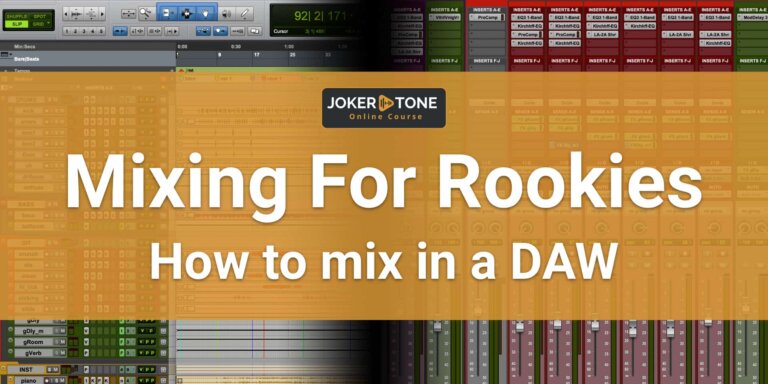The 100% perfect recording system will probably never really exist. You will have to deal with problems sporadically, but in the best case, these will only be minor issues. The occurrence of issues should fall under the category “rare” and to achieve this, you can take preventative measures throughout the entire setup. If you are also prepared for possible solutions in advance when an issue occurs, you no longer have to worry about your recording process. Get to know the 6 factors for a stress-free home recording setup to create your music faster, better and with more fun.
Which 6 factors are essential for a stress-free home recording setup in analog and digital music production?
Whether it’s recording an idea, a first demo version, or the next studio EP, the entire recording setup has to work so that you are not interrupted in your creative process and can fully devote yourself to the music. So it’s fundamentally important not to be annoyed by computer and/or software problems. Of course, you should also not allow yourself to be negatively influenced or distracted by your equipment or surroundings.
Which 6 factors are part of a stress-free home recording setup?
- the environment or location in which you are recording
- the sound source (your instrument, your voice, or yourself as the performing artist)
- the microphone that captures the sound source
- the outboard equipment (if not available in the interface) such as mixing console or preamp with eq, compressor, effects, and all accessories (e.g., cables, pop protection, stand)
- interaction of the analog and digital levels such as the interface, the computer, and the software (operating system, DAW, plugins)
- the monitoring options such as speakers and/or headphones
If you can “master” these 6 factors and make sure that there is little room for error in these areas, then you have an excellent recording setup for your music production.
1. The environment
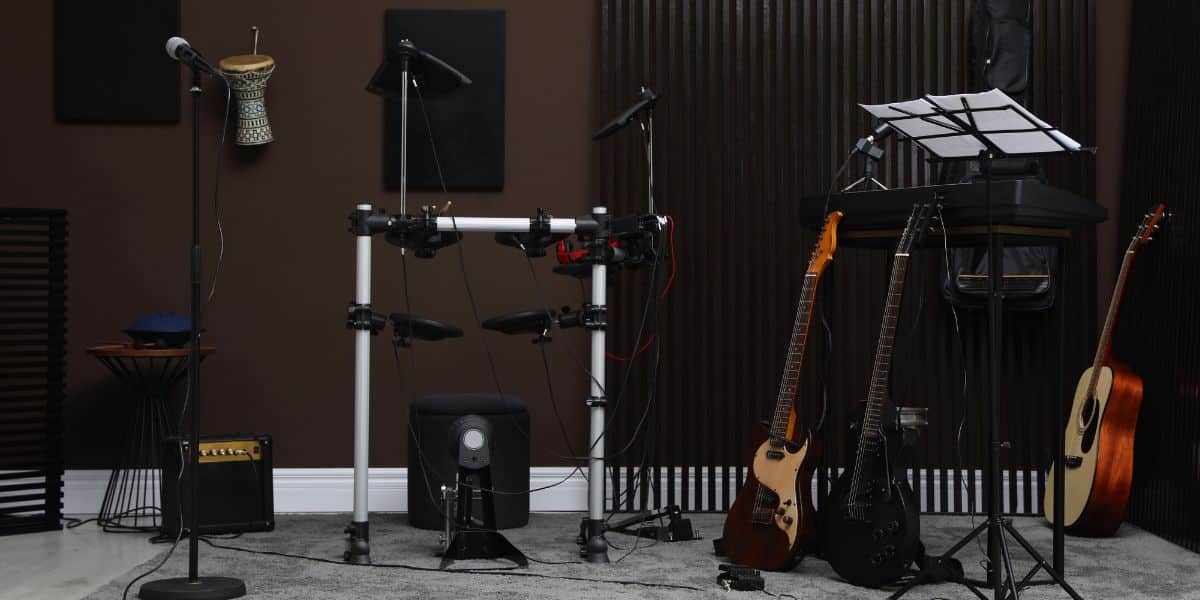
What is meant by an environment for good music production?
- External Noise: Free from external noise, possibly from street noise, neighbours, or even roommates/family members. I used to rehearse with my band in a rehearsal room that vibrated every time the band next door was there at the same time. They played hardcore metal with deep tuning, and a glorious bass sound, and their double bass drums were like a barrage of gunfire. This was therefore not a good environment for rehearsing or even recording properly, at least not during the same rehearsal period. There was no need to plan recordings during this time.
- The inner acoustic: The acoustics within the room should also suit you. For a studio room or music room, flutter echoes and any buzzing should be avoided. It is better to have a room sound that is a little too dry than too much uncontrolled reverb or echo that you can no longer control or even remove after recording. It is often the lower bass frequencies that are difficult to control without massive effort or the harder echoes within a small room.
- Additional distraction: In addition, you should ensure a distraction-free environment yourself by ignoring your email program, not answering any messenger messages (such as WhatsApp or iMessage), and perhaps even simply putting your cell phone in airplane mode so that you can fully immerse yourself in the music.
- Light: Do you like it darker or dimmed light? To get into the right mood, I believe the correct setup of lighting plays a big role and is effortless to create with some light stands and LEDs. You can even create a colorful light setup to turn the light in the way you need it to be.
- Fresh Air: To have fresh air, an active system would be the best, but this is not always an option. When I built my first self-made recording space, I only could build with some de-centralized fans that pull some fresh air into the recording room. But the best system would replace the used air as well. If you can’t build that for yourself because of your given environment, be sure to take some regular time to open your windows and doors for a few minutes. Fresh air will help you to be more concentrated and better when you need to act on your music and recordings.
- Comfortable Temperatures: Too cold, too warm…both situations are not comfortable. This is, of course, related to your country where you have your music space but make sure you have some heating for the cold months and some air conditioning (at least again to open your window for fresh and colder air) to come in.
- Stable electronic: Use only safe and tested eclectic plugs and outlets inside your music room. If you get interferences by your electric connections you should get some professional help or try some voltage stabilizers for example from Furman.
As you can see, there are many little factors involved that can lead you to a nice environment for your music production and home recording setup.
2. The sound source

Be it your instrument or your voice: Only if these are in working conditions you can practice properly, be creative, and record your performance without stress.
For the instrumentalists
- Regular instrument care not only preserves the instrument for longer but it can also be played for longer without any problems.
- By taking regular care of your instrument, you build up some kind of “relationship” with the instrument and this pays off positively when recording as well
- If you are not very attracted to your instrument, it still pays to take care of it because then the potential resale value is always higher for a well-maintained instrument, regardless of its quality and age
- Tuning and the play feeling are significant to achieving the best recording sound and playing. Learn how to tune by ear and also check with the right and quality tools. This is related to all instruments that you can tune.
- For the guitar players: Get you on fresh guitar strings…preferably the day before the final intensive recording for a song takes place.
For the singers
- Train your voice constantly and regularly. It’s better to train for a shorter period every day or every two days than once a week at a rehearsal lasting several hours.
- Train your voice the evening before longer rehearsals or recordings
- Warm up your voice thoroughly with exercises before you get going
- You can’t buy new vocal cords, so you should take special care not to “break them”.
- If you want or need to shout, scream or any special singing technique, get a teacher to learn this in the right way before you damage your voice.
3. The microphone
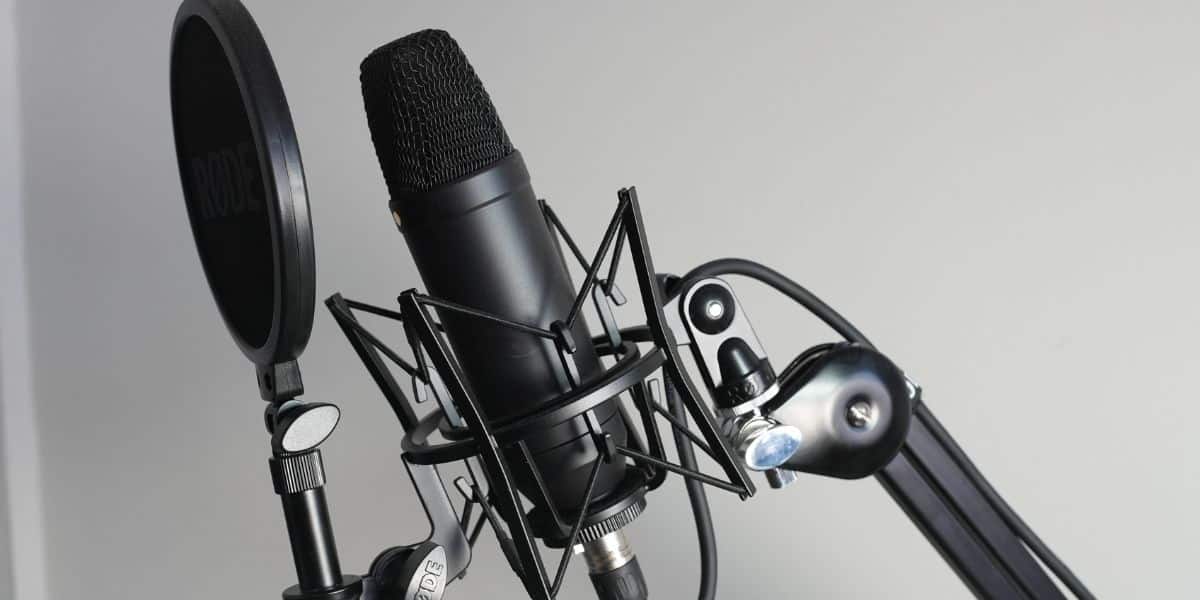
Choosing the right microphone for the sound source is more important than the quality. A microphone in the 1000 Euro or 2000 Euro price range is not necessarily better than a 300 Euro or 400 Euro microphone. Even though I own a microphone in the three-digit price range (and I wouldn’t want to be without it), I fully agree with the opinion that you can achieve excellent and impressive results with inexpensive and proven microphones in a home recording setup.
With a vocal microphone, it must support the singer’s voice. This is one of the reasons why recording studios have several vocal microphones on hand to select the right microphone for each recording situation. And you don’t always have to decide on a high-end microphone.
When I prepared a recording setup for a vocal recording, I had at least 2 if not 3 microphones wired up and ready at the start of the session. Then I spent the first few minutes with the singer, briefly testing which microphone was best suited to the respective voice and the desired genre if I didn’t know the voice beforehand.
When I record myself, I often use different microphones for my lead vocals and my backing vocals, as they already have a different „coloration“ and therefore stand out from each other without any EQ or mixing settings.
Maybe you know it when you record and listen to it, and you are not satisfied with the sound. It sounds harsh or musty or nothing close to what you want. Singing on with this feeling — is rather difficult.
4. Outboard gear in a home recording setup
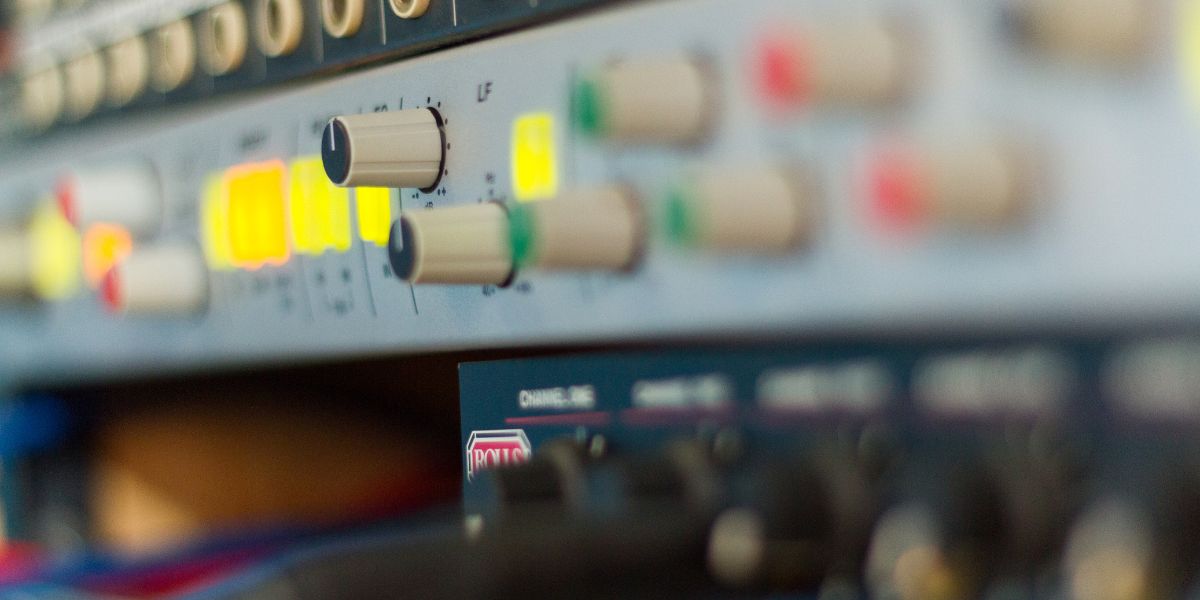
First and foremost, preamps should amplify the signal, preferably without interference and far away from the background noise. If they then add a deliberate „coloration“ to the recording signal, that’s great, but it is already a specific characteristic. Whether the preamp contributes to this coloration or not is not decisive for a stress-free home recording. The same can be said for all outboard equipment such as compressors, EQs, and other effects. They all must be functional and properly operated or adjusted for their use. The price range therefore also plays a subordinate role here.
Keep an eye on quality cabling as it is written in the manual, and be sure that the gear you want to use functions as you want it at the beginning of the recording session. At best, you try that a day or some hours before and not when you would like to start recording. If you have to make a break or start later because of a technical problem, stress the recording time and the feeling of the first takes.
5. Digital Level

The interface should convert the signal from analog to digital as faithfully as possible and not produce any dropouts or errors during the recording process. The interaction between the interface, software (DAW), and the computer is crucial here. And this is often where the biggest problems arise, as many factors influence each other and the user is often helplessly at the mercy of them.
A stable digital system — a music computer that is preferably only available for music and is equipped and configured accordingly — is worth its weight in gold. Once you have achieved this “golden system”, you should keep the line “Never change a running system” in mind from time to time.
The handling of the software must suit you and meet your requirements for your music production. So it doesn’t matter who the manufacturer is, whether it is/was the industry standard, or whether everyone else around you feels they prefer a different DAW (Digital Audio Workstation). You need to watch, work, and be able to handle the tasks that are needed to create your awesome creative and musical output. Nothing more and nothing less.
If the software has problems that you can’t fix yourself, get some help (if you have the time and will) or look for a new DAW. If you don’t like the graphical layout, built-in functions, or handling, you also have two possibilities: Get used to it or find a new DAW. Don’t let your creative streak be negatively influenced by software or some others, meaning that you have to use a specific kind of DAW in your home recording setup because of “whatever”.
6. The monitoring situation
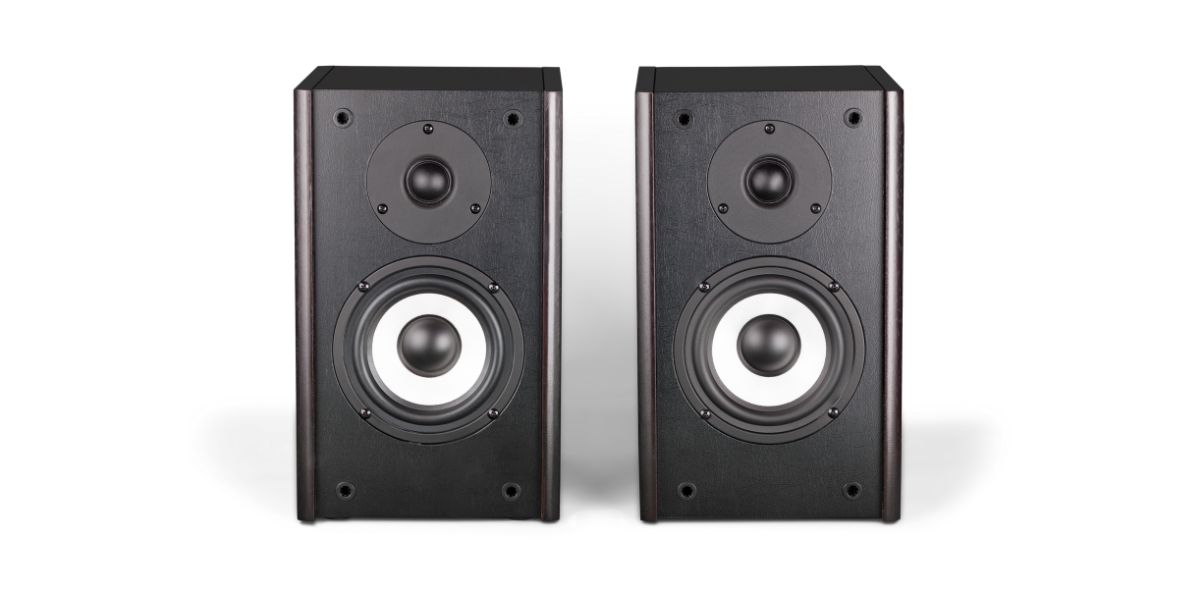
In my view, the monitoring situation is one of the underrated factors in the production chain. If you get into recording gear you probably read most of the time about “the new microphone style”, “the best clone compressors of….” or “the new standard of analog plugins”…and typically (not every time) it is just a kind of marketing talk.
Let me ask you one short question:
How do you want to judge your recorded sound in your home recording setup if you can’t create a reasonable monitoring facility? This area includes at first the monitoring speakers, i.e., the monitors, if you want to use them or can use them at all due to your own (home) environment. Second, your room also plays an important role here, as does the correct positioning of the speakers, aligned to your listening position and, of course, according to the manufacturer’s specifications.
If you use headphones additionally or exclusively, they should also meet certain criteria in a home recording setup:
- Optimal fit on the head and ears, also designed for prolonged wear
- Closed headphones should be used for recording so that the signal from the headphones is not transmitted to the recording microphone. If you can hear the “click-track” quietly in the background on the vocal track, this is often a sign that you have chosen the wrong headphones.
- Semi-open or open headphones are better suited for monitoring, as they do not completely shield you and the bass range in particular can be better assessed.
Creating at least one, better two monitoring system (for example recording through headphones and judging/mixing through monitor boxes) is a crucial part of the stress-free home recording setup.
CONCLUSION
If you can master these six factors and prevent potential sources of problems in advance, you will have taken a giant step towards a “stress-free home recording setup”.
- Which of these points causes you the most worries or problems?
- Are you unsure how to tackle one of these problems?
Get in touch and tell me what are your problems or how you prevent and overcome these in your recording environment. Just use the contact form. I am happy to get in contact with you.
Niels from Joker Tone Course

